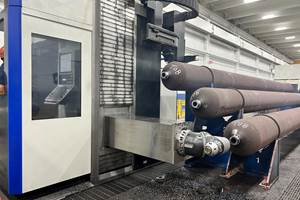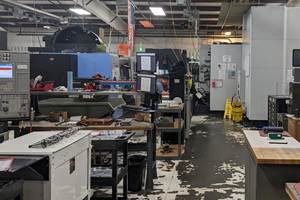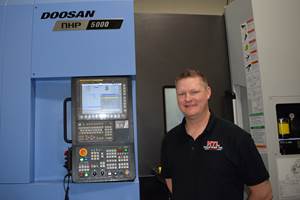How To Perfect A Machining Process (Or At Least How To Make It More Trustworthy)
Instead of inspecting machined parts, get to know the process better.
There will always be uncertainty. For this reason, it may not be possible to truly “perfect” a machining process—at least not in literal terms. But what if the scope of all of the uncertainty in the process could be known in advance? What if the error was known to be small enough that it wouldn't compromise the precision that the part required? Such a process could be considered “perfect” as far as that particular part was concerned. The process could be trusted to make that part, and this trust alone could deliver substantial savings.
Users of machine tools traditionally have not trusted their processes. There has always been a gage at the end (if not a series of gages) to check whether the part had been machined as expected.
But what about using a gage at the beginning?
That is, what about inspecting the process first, so the shop can determine in advance whether the process can make the part?
In the scenario just described, a stand-alone gage such as a CMM no longer has to police the process on an ongoing basis. Instead, CMM inspection of finished parts can be used to provide independent validation in just those cases where the validation is needed. In other cases, the process can simply keep on producing without the CMM—making those parts that the shop already knows the process can make.
This practice of inspecting to measure the process instead of the parts is becoming more common as manufacturers recognize how much they can save not only by inspecting less frequently, but also by avoiding the scrap that results from not knowing precisely what a process can do.
Two people who have helped shops implement this inspection strategy work for GE Fanuc Automation in Charlottesville, Virginia. They are Mark Brownhill, manager of machine tool services, and Jim Spearman, manager of machine tool solutions. This article summarizes some of their insights into measuring and optimizing the capabilities of a machining process.
Step one, they say, is to identify the sources of variability. That is, identify the many reasons why machining errors occur.
Murphy's Law?
To begin, just the machine tool itself offers plenty of room for error. A typical three-axis machine tool will have 21 degrees of freedom, which translates to 21 potential sources of inaccuracy. Then there are the workholding elements—the fixtures, clamps, chucks, vises and jaws—that add even more degrees of freedom.
Add to all of this the variability that is inherent in other elements of the process. The tooling, material, and any necessary measurements and data entry all introduce opportunities for variation. And variation from job to job can come from the way the part program is written, as well as just the programmer's act of selecting a methodology for producing a particular part.
The variability mentioned so far is present before the first piece is machined. Hit “Cycle Start,” and even more sources of variability come into play. How repeatable is the machine? How consistently are workpieces loaded? And then there is the variation that occurs simply as a result of machining, such as tool wear or tool breakage.
In short, a lot can go wrong. But here's the thing: The error sources are finite. They are also measurable, and in many cases, they are improvable. To achieve a process that doesn't have to be policed, the shop simply identifies and “fixes” as many sources of variability as it reasonably can—perhaps attacking them in order of their severity. Then, the shop establishes a baseline level of performance by measuring the variability that still remains. By improving a process and then measuring what it can do, the shop can predict in advance precisely which jobs should be assigned to particular machines.
Though there are many sources of variability, they fall into two basic categories. The distinction is helpful when it comes to addressing them. There are errors that affect “setup yield,” which are the errors that are present for the very first piece machined. Then there are the errors affecting “production yield,” which are the errors that only come into play in the course of producing a run of parts. Where the first sort of error has to do with the accuracy of the process, the second sort of error has to do with the repeatability.
More Accurate Production
The accuracy of the process represents much more than just the accuracy of the machine. However, the machine's accuracy is a fundamental component.
The machine's accuracy can be measured using a laser. Initially, the laser measurement can help in improving the accuracy through maintenance. At the point where the machine's accuracy can no longer be improved in this way, the analysis then becomes valuable for characterizing what the machine can do. A particular job should be assigned to—and remain assigned to—a machine tool with measured capabilities good enough to allow the machine to comfortably produce that part.
Another influence on the accuracy of the process comes from human involvement, and all of the potential for variability and mistakes that this introduces. Here, maintenance can't help. Instead, achieving a more accurate process often comes down to finding ways to minimize human beings' roles.
The operator is not the only human concerned here. Differences in processing strategy from programmer to programmer also represent a significant source of variability—and one that can be controlled. To make this aspect of the process more consistent, the shop can implement CAM automation that automatically recognizes part features and assigns tool paths according to the shop's preferred practices. Not all programming can be automated in this way, but using this technology can at least improve programming consistency.
There is also the hardware automation that does address the operator's role. At the machine tool, automation can take a variety of forms, many of which don't require the shop to add expensive equipment. Some possibilities include:
- Built-in fixture identification. A fixture can include a feature that identifies the part number it holds. The CNC can then use this identification to automatically confirm that the correct program has been called up for that part, avoiding a potentially costly error. The identification feature might take the form of a machine-readable label such as a bar code, but it might also take the form of a feature that is inspected through probing. For example, different fixtures could have identifier holes of different diameters, allowing the CNC's measurement of the hole diameter to tell it which program number it should be running.
- Reference points on the fixture. A tooling ball, or some comparable feature, can be added to the fixture to establish X-Y-Z reference points for the work. The program can then include a probing routine for locating this feature just before machining begins, so that an operator no longer has to measure and enter workpiece offsets by hand.
- Automatic transfer of tool data. Entering tool offset data by hand should also be avoided. One way to do this is to network the tool measurement device to the CNC for direct transfer of this data. As an alternative, toolholders can be equipped with electronic ID tags in which tool measurements are stored long enough for the data to be read in automatically at the CNC.
More Repeatable Production
Laser measurement is one of two complementary methods for inspecting the performance of machine tools. The other is ballbar inspection. While the laser can be used to establish a machine's performance baseline, the ballbar offers an easy way to monitor that performance over time. A 30-minute inspection routine using a ballbar delivers a variety of performance data. By performing this inspection regularly, a shop can either check for changes or confirm that the machine is still performing at its baseline level. By monitoring patterns in a machine's ballbar inspections over time, the shop can even predict when various maintenance operations may need to be performed.
Inspection with the ballbar takes place outside the cut. Once cutting begins, certain CNC capabilities become valuable for countering or addressing the sorts of errors that vary from workpiece to workpiece.
These capabilities include:
- Adaptive control. Because a dull tool draws more current, the CNC's measure of this current can allow it to determine when a tool needs to be replaced. The same capability also lets the CNC respond to variations in either the material properties or the profile of the cut by slowing the feed rate to compensate for an excessive load.
- Tool management. A shop that has measured the life expectancy of a particular tool can take advantage of a CNC that has tool management capability. The CNC tracks the use of a given tool, replacing it automatically when its specific cutting life has been reached.
- In-process inspection. In addition to its role in locating parts before cutting, the machine tool probe can also do much of the work of inspecting a part when the machining is done. It is not true that a machine tool can't inspect its own work. Errors resulting from tool wear or tool breakage, for example, can be detected using the probe. Finding these errors before the work leaves the machine makes it easier to correct them, and the probe measurement might even allow this error correction to occur as an automatic part of the program.
Getting Started
One of the problems of realizing process improvements such as these is knowing which improvement to make. With any machining process, there is so much that might be improved upon that it's difficult to know where to begin.
To find a particular problem with the process that is sufficiently important to make it worth addressing, try asking this question: What does my customer think is critical to quality? While that question may not identify just one problem to tackle, it will at least narrow the field. Other important questions to ask after that relate to whether a problem is measurable, and whether solving the problem is feasible.
Once a problem is identified, the success of the solution will depend not only on the solution's technical merits, but also on how well the solution is accepted. Involving the various stakeholders from the beginning of the project is one way to encourage this acceptance. To help identify the relevant people for a particular project, ask questions including: Who speaks for manufacturing? Who speaks for the customer? Who has a view of the overall process that is broad enough to define the important issues? All of these people should be brought into the team.
After that, finding the right problem to address is likely to get easier. Once the process improvement team succeeds—once it manages to make the process better—then that very success is likely to highlight precisely which quality-related problem the shop should be looking at next.
Related Content
Large-Format Machining Simplifies Tube Manufacturing
Downtime is the enemy of efficient manufacturing — a problem FIBA Technologies has addressed through purchasing a Soraluce FLP 14000.
Read MoreShop Replaces Two Verticals With One Horizontal
By trading two VMCs in to help finance the purchase of a new HMC, this shop was able to significantly increase production and move to lights-out machining.
Read MoreBest Practices: Machining Difficult Materials
Cutting hardened steel, titanium and other difficult materials requires picking the right tools, eliminating spindle runout and relying on best practices to achieve tight part tolerances.
Read MoreThe Job Shop Is the First Half of the Business
By day, NTL Industries went from a lathe and a mill in a home garage to an 11-employee enterprise in under five years. By night, it tackles a new future.
Read MoreRead Next
3 Mistakes That Cause CNC Programs to Fail
Despite enhancements to manufacturing technology, there are still issues today that can cause programs to fail. These failures can cause lost time, scrapped parts, damaged machines and even injured operators.
Read MoreThe Cut Scene: The Finer Details of Large-Format Machining
Small details and features can have an outsized impact on large parts, such as Barbco’s collapsible utility drill head.
Read More
.jpg;width=70;height=70;mode=crop)



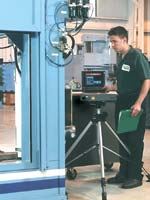
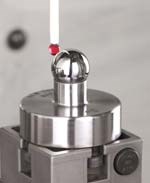

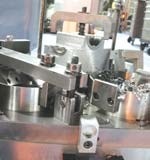
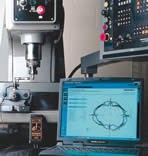

















.png;maxWidth=300;quality=90)

